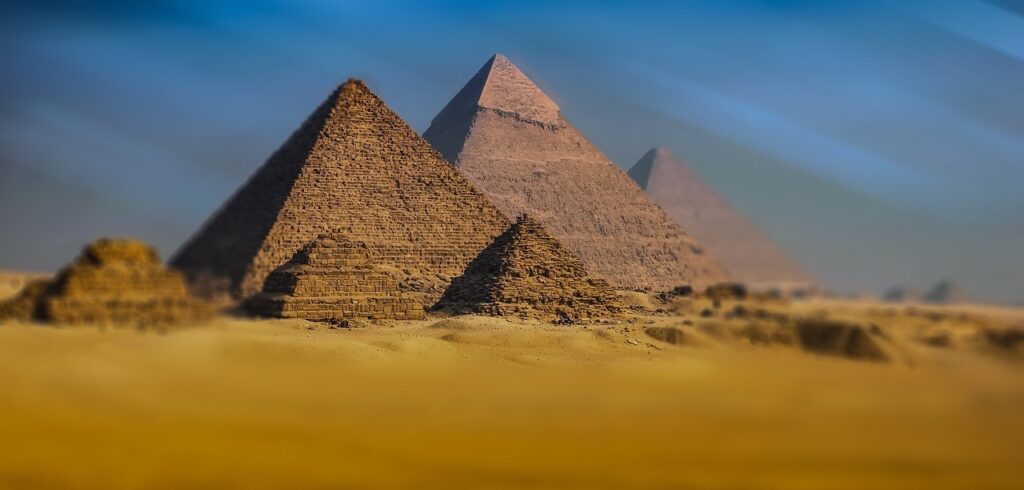Africa is lined by the Mediterranean Ocean toward the north the Indian Sea toward the east, and the Atlantic toward the west. It is quite possibly the most established mainland on the planet and is loaded up with unimaginable old building wonders and various organizations of societies. From the pyramid of far-off Egypt to the superb stone-slashed places of worship in Ethiopia, Africa’s verifiable landmarks are a reasonable portrayal of the inventive and resolute pre-cursor society. This paper plans to investigate 10 historical places in Africa that have been of huge importance forever, giving perusers a brief look at the history of Africa.
Historical places in Africa
The African mainland has demonstrated a rich and exciting history by offering different verifiable locales that changed history once in a while, most essentially. Beginning from the incomparable Pharaohs of Egypt, whose heritage remains noticeable in the colossal pyramids and vague pictographs, to gigantic realms that once ruled extraordinary domains of the African mainland, historical places in Africa draw in travelers and history sweethearts. As these destinations demonstrate, these African nations don’t just have a perplexing and rich history; in addition, present-day Africa holds many promising and social qualities.
1. The Pyramids of Giza, Egypt.
I at long last wound up remaining before these titans of human design that date back to the fourth thousand years B.C. The Incomparable Pyramid of Giza is one of the seven wonders left today, which is one of the best-designed wonders and a prerequisite for higher accuracy. By and by, gazing at the referenced landmarks, I’m overpowered with a sensation of appreciation, which generally seems while understanding the size of man’s accomplishments.
The best time to visit the pyramids is usually between November and February, during the Egyptian winter. The temperatures are milder with warm days and cool nights, which make visits much more comfortable.
2. Lalibela Rock-Slashed Temples, Ethiopia
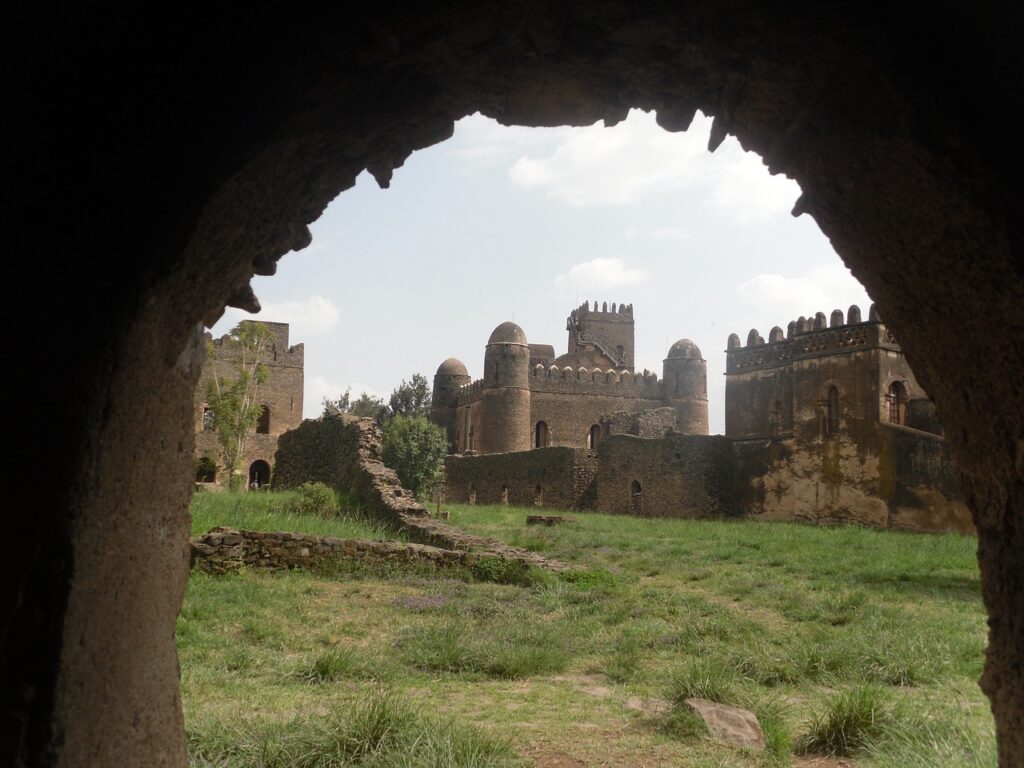
Lalibela Rock-Slashed Chapels are situated in the high country of Ethiopia, and these wonderful temples exhibit the commitment of individuals towards their Christianity and the structural virtues of development. Tracing back to the 12th and thirteenth centuries, these figures of cut-solid temples are slashed out as social and strict landmarks that call for design wonder and miracle, meriting to be a piece of a UNESCO World Heritage Site. The workmanship that is applied to these designs reflects the high knowledge of individuals while building them, and for that reason, Lalibela is a vital verifiable site in Africa.
best time to visit Lalibela can be any time of the year, even during the rainy season.
3. Incredible Zimbabwe Vestiges, Zimbabwe
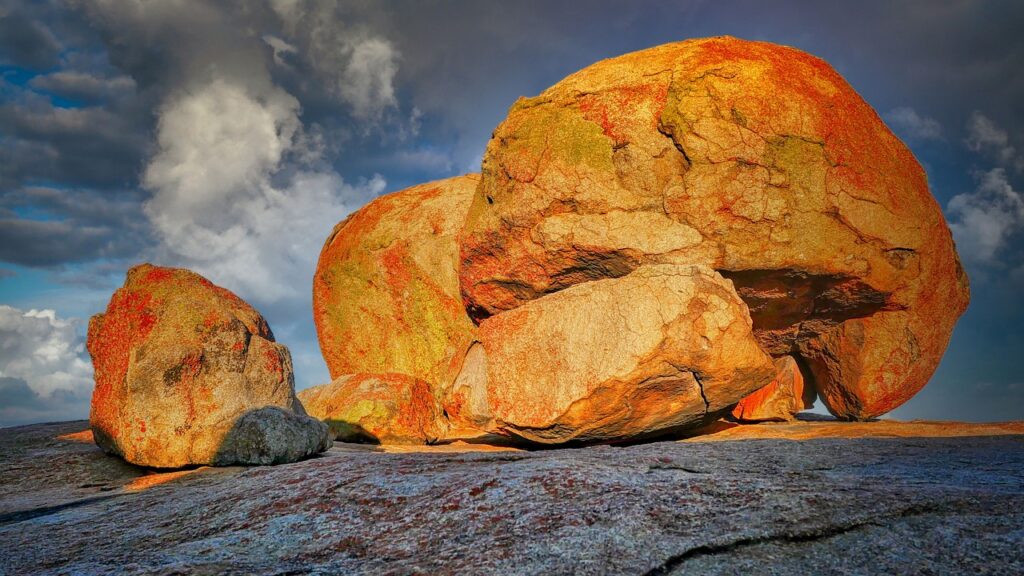
Solicited by an atmosphere of mystery and detachment, the Incomparable Zimbabwe Remains are one of the emblematic types of evidence of the presence of the once energetic Realm of Zimbabwe. This South African city started in the 11th and 15th centuries. Dutoitspan has elaborate highlights of stonework and controlling designs, for example, the Incomparable Nook and the Valley Remnants complex. Visiting such remaining parts gives a comprehension of the rich monetary exercises, mechanical progressions, and collaboration that happened around here, making it one of the crucial social locales in Africa.
The best time to visit Zimbabwe is between July and October, when game viewing is at its peak.
4. Luxor Sanctuary, Egypt

Another African verifiable destination and attraction that ought to be on any voyager’s list of choices is the Extravagance Sanctuary of Old Egyptian Human Progress, a building work of art popular for providing guests with a vibe of the old culture of Egypt. This broad, strict compound, established in the fourteenth century BCE, was made to pay adoration to the divinities Amun, Mut, and Khonsu. Concerning the design and stupendous highlights, the enormous level of the arches, and the thickness of the pictographs, the intriguing Road of Sphinxes passes on a motivating and mysterious ambi/infancy that has entranced individuals for ages.
Although winter is technically Egypt’s high season for tourism, Luxor sees fewer visitors during this time than other popular destinations like Cairo and Sharm el Sheikh.
5. Robben Island, South Africa
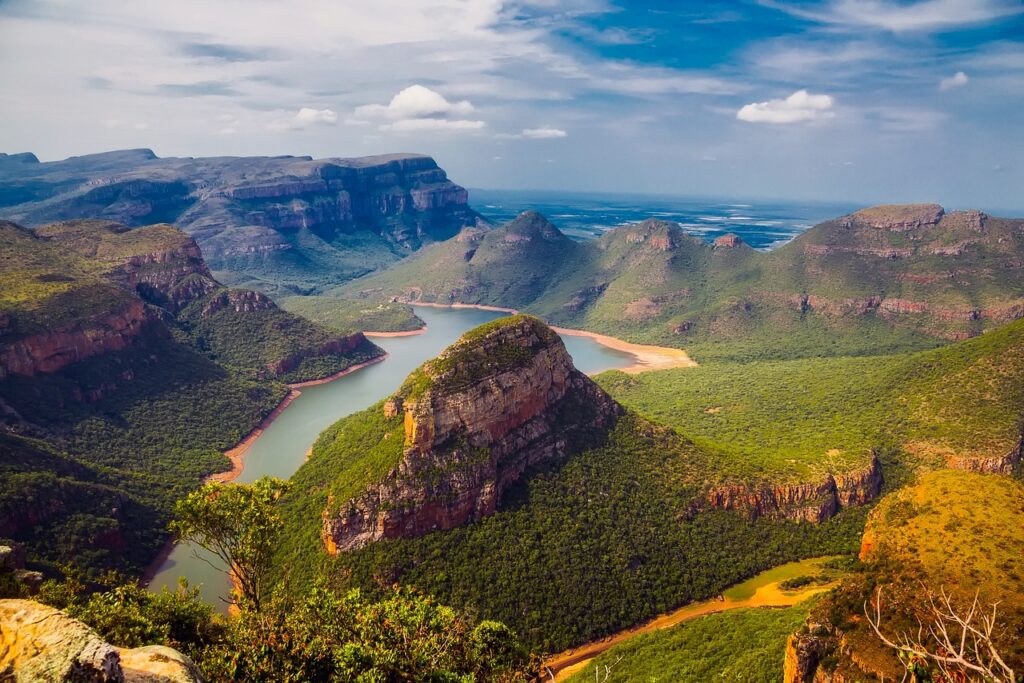
Robben Island, South Africa, close to Cape Town, is the land parcel where many free and subjugated individuals confronted misery and shamefulness. This island is perceived as a UNESCO World Heritage Site. Tou had been known as the Robben Island jail, which was the greatest security jail for political detainees in the politically sanctioned racial segregation period, and Nelson Mandela was its most famous prisoner. Presently, Robben Island fills in as an image of battle, and the battle for privileges subsequently puts it among the most verifiable spots in Africa.
6. Vestiges of Leptis Magna, Libya
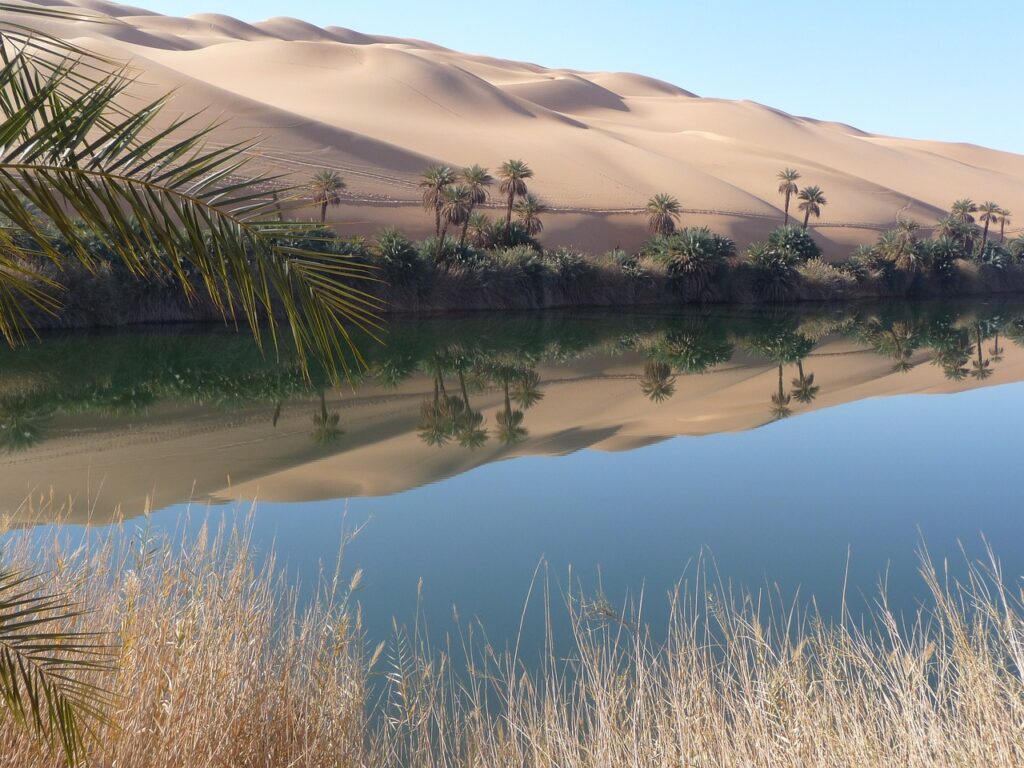
This is one of numerous extraordinary locales with incredible history to tell, displaying the superbness of the Romans when they involved North Africa. Established about the seventh century BCE as a Phoenician repayment, the city was subsequently extended during the Roman Realm and encountered a raised development, thriving and developing to be a socially financial city. Some very well-guarded structures were obliterated in the city, for example, the Curve of Septimius Severus and Hadrianic Showers, to demonstrate that it used to be a great city and had great design styles.
The best time to visit Leptis Magna is during the spring and fall months when the weather is mild and the crowds are less.
7. Aksum Pillars, Ethiopia

Aksum, otherwise called Axum, is an old city with archeological destinations in northern Ethiopia in the locale that was once home to serious areas of strength that ruled over the region for a considerable length of time. One of the most surprising tokens of this old culture, on Focal Ethiopia, ‘The Aksum Pillars’ are four tall rock stele from the fourth century CE. These tall stelae, going from 10 to 33 meters, cut with nitty-gritty plans and data about the Aksum Realm and its administrations, validate the building and design brightness of old Aksum, making it one of the most significant verifiable locales in Africa.
Like much of Northern Ethiopia, Axum is best avoided during the wet season (May to September), when it is hard to reach and muddy, but it can be visited any other time of year.
8. Meroe Pyramids, Sudan
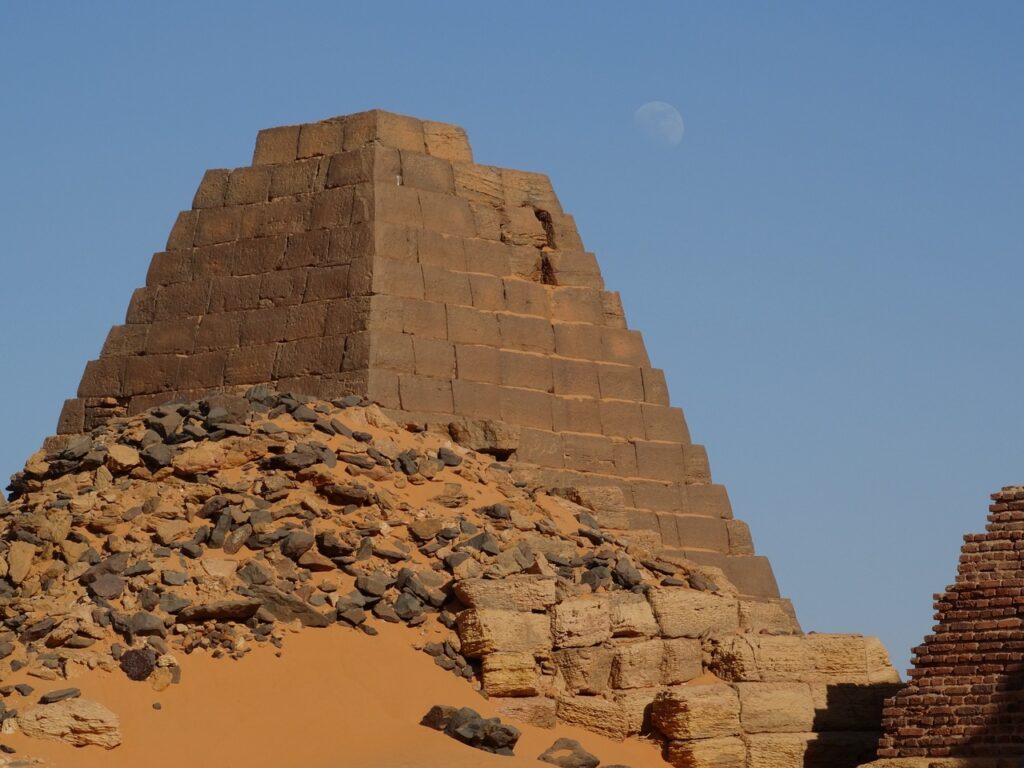
Even though vacationers get keen on the renowned Pyramids of Giza in Egypt, the Meroe Pyramids in Sudan are additionally exceptionally enlightening about the old milestones of the powerful realm of Kush. These pyramids that reached between the eighth century BCE and the 4th century CE address how the Nubian culture could plan and build structures, particularly for strict purposes. Today, more than 200 pyramids are spread over the area of Mero, and hence, it is quite possibly one of the most socially applicable and entrancing regions in Africa.
The best time to travel is between September and March, during the cooler winter months. The heat starts to build in March making travel unbearably hot between April and September.
9. Djenne Mosque, Mali
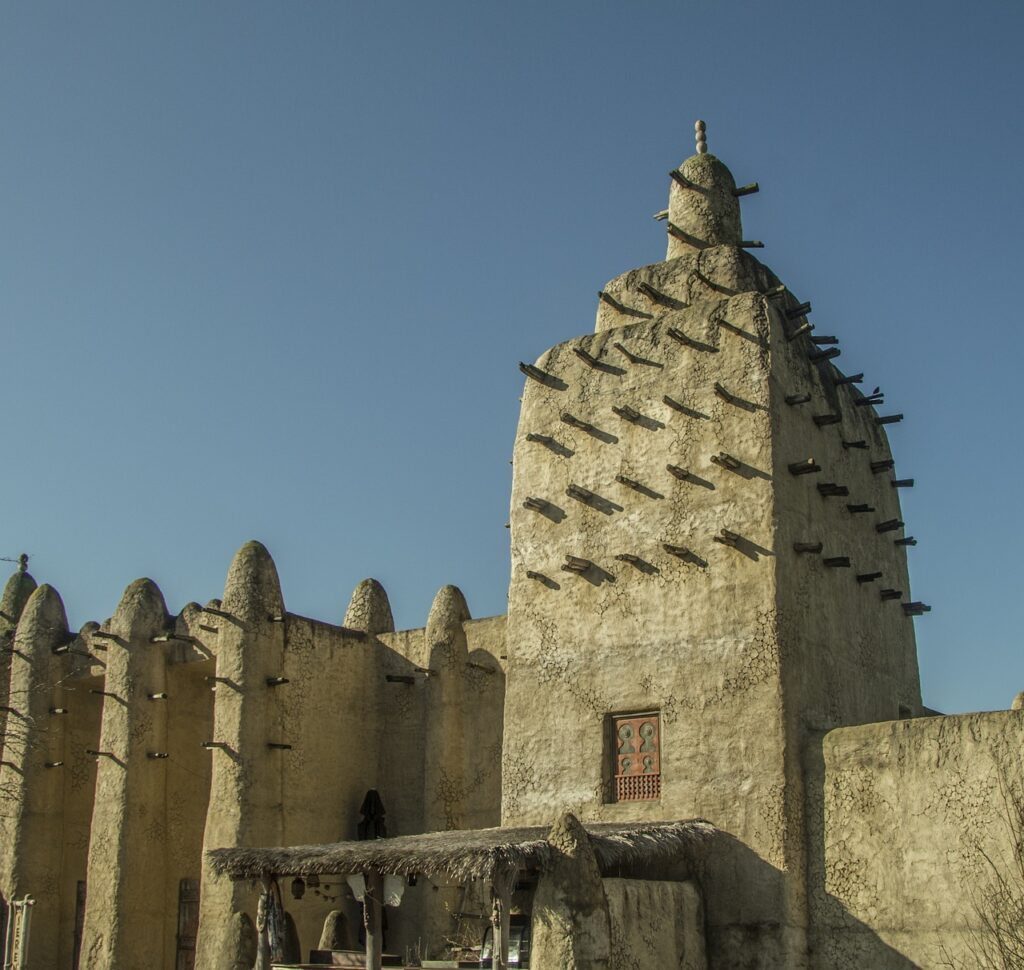
The Incomparable Mosque of Djenne, additionally part of the UNESCO World Legacy, is the best illustration of how African Muslims embraced and expounded the elements of Muslim design. Almou, or the Incomparable Mosque, was underlying the thirteenth century alongside numerous different designs of that time, and it was made totally of sun-dried mud blocks, an exceptional component of Sahelian manufacturers. Its cheeky and high minarets of mud-blocks give it a shocking look; accordingly, Djenne without a doubt became quite possibly one of the most verifiable archeological and ethnographic foci in Africa.
October, November, December and January are the best time to visit Mali.
10. Twyfelfontein Rock Inscriptions, Namibia
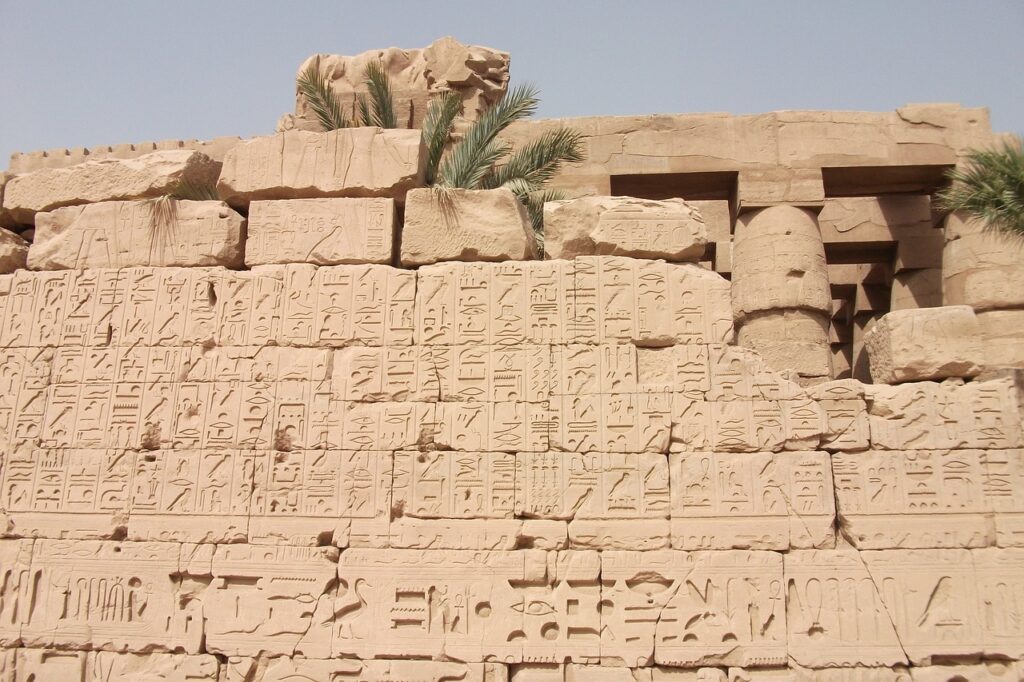
Showing an assortment of nearly 2,500 stone etchings, quite a bit of it portraying trackers and their prey, the Twyfelfontein Rock Inscriptions are among the main archeological destinations in Namibia. These are several radiant ancient artistic creations exhibiting stone carvings that are dated to be millennia old and range from portrayed creature figures to conceptual images. This workmanship display remains as a declaration of Africa’s different history, and as the need might arise for creative portrayal of otherworldly qualities, making the site one of the socially and generally most significant spots in the whole of Africa.
Twyfelfontein is open from 8 a.m. to 5 p.m.; a good time to visit is either early in the morning or later in the afternoon.
Final Words
For that reason, African verifiable puts are not just quiet observers on century-flabbergasted rocks, but clear instances of African individuals’ perseverance, imagination, and rich otherworldly customs. From landmarks of the old world such as Egyptian pyramids to the grand Stone Holy Places in Ethiopia, these ten verifiable attractions in Africa are an illuminating excursion through history, displaying the rich legacy of Africa’s set of experiences and societies.
Through this multitude of destinations, we find as well as worth the African past, yet additionally rediscover the strength and determination of humankind in the mainland’s verifiable heritage. In this manner, get your gear and allow me to direct you through the African verifiable pearls—Africa’s rich history of teaching, rousing, and welcoming. That was all about 10 historical places in Africa.
FAQs
In any case, what is the age of the Pyramids of Giza?
The Pyramids of Giza, among the Seven Marvels of the World, are landmarks that date back to 4,500 years in the hour of the Old Egyptian Pharaohs Khufu, Khafre, and Menkaure.
In what way(s) has history been utilized to upgrade enthusiasm for the Incomparable Zimbabwe Remnants?
Extending over an area of roughly fifteen hundred hectares, the Incomparable Zimbabwe Vestiges are those that survive from the old realm of Zimbabwe, which had outright command over the locale from the eleventh to the mid-fifteenth century. A portion of these designs embody the noteworthy structural and stonework methods that this early development utilized, as well as their great exchanging mastery.
For what reason is the Rochen Island spot of authentic significance?
It is an island close to Cape Town in South Africa in which the greatest security jail was viewed as popular for detaining dark African political detainees during politically sanctioned racial segregation. This island will continuously remain related to Nelson Mandela, a reprimanded political dissident who burned through 18 years of detention here and subsequently turned into an image of the battle against mistreatment and the safeguarding of common liberties.
Everything that sort of distinctive highlights says to us more about the Djenne Mosque situated in Mali?
The Incomparable Mosque of Djenne is one more compositional miracle with an outside, rooftop, and walls produced using prepared dirt. The structural subtleties, with their amazing pinnacles and mathematical styles, are developed with mud-block minarets and have unmistakable African

